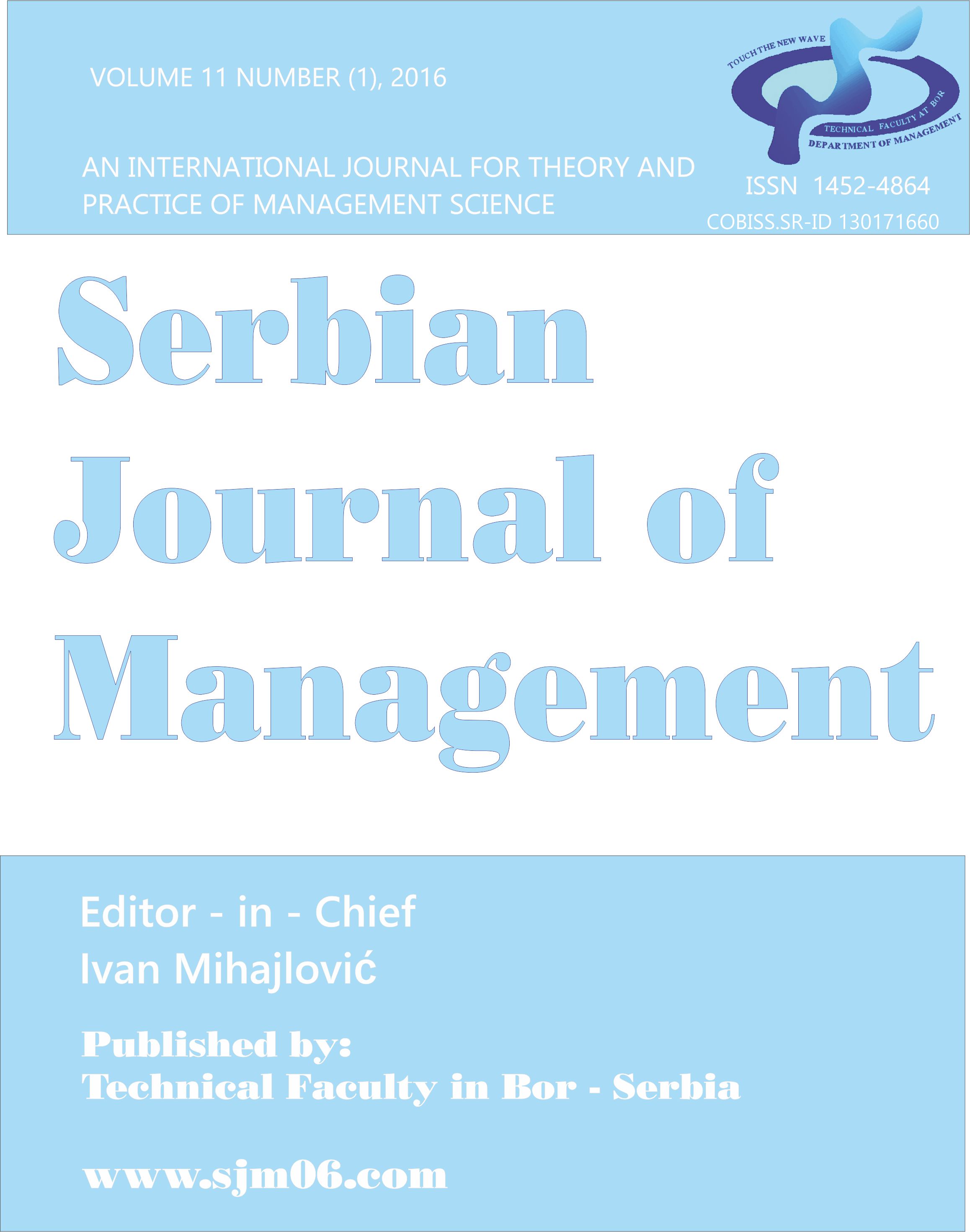Organizational culture as one of the main factors for the successful management of protection
Abstract
The goal of this research is to establish the influence of organizational culture on the system of safety and health at work. The research sample included 556 respondents of various activities in Russia.
Based on the results, it can be concluded that there is a statistically significant connection of the Attitude towards occupational safety with 5 out of 7 aspects of organizational culture, as well as with the general factor of Usefulness of the manner of management. In addition, there is a statistically significant connection to age, total years of service and qualifications. Through a comparative analysis of results acquired in the Republic of Serbia and Russia, differences in attitudes towards safety and health activities at work were acquired i.e. there is a difference between the average answers of respondents from Serbia and Russia in the Attitude towards occupational safety which is on average slightly more prominent in respondents from Serbia. In relation to organizational culture aspects, there are differences in Vision, Credibility, Feedback and recognition as well as Responsibility. Respondents from Serbia have higher average values on all these measures, but all the differences are small (all effect sizes are below 0.2).
References
Baumgartner, R.J., & Zielowski, C. (2007). Analyzing zero emission strategies regarding impact on organizational culture and contribution to sustainable development. Journal of Cleaner Production, 15 (13-14), 1321-1327.
Brad, S.L., & Jean, H.M. (2010). Workplace spirituality, contested meaning, and the culture of organization: A critical sensemaking account. Journal of Organizational Change Management, 23 (3), 325-341.
Bryson, J. (2008). Dominant, emergent, and residual culture: the dynamics of organizational change. Journal of Organizational Change Management, 21 (6), 743-757.
Davis, S. (1984). Managing Corporate Culture, Cambridge: Balinger.
Denison, D.R. (1990). Corporate Culture and Organizational Effectiveness, New York: John Wiley & Sons.
Hofstede, G., Neuijen, B., Ohayv, D.D., & Sanders, G. (1990). Measuring organizational cultures: a qualitative and quantitative study across twenty cases. Administrative Science Quarterly, 35 (2), 286-316.
Kolenc, I. (2009). The impact of leadership executive managers on the status of safety and health at work. . Master thesis. Koper, Slovenia: Faculty of management (in Slovenian)
Kotter, J.P., & Heskett, J.L. (1992). Corporate Culture and Performance, New York: The Free Press.
Markič, M., Kolenc, I., Miklavčič-Šumanski, M., & Živković, S. (2011b). Top managers and preventive safety. Safety, 53(4), 319-329.
Markič, M., Živković, S., & Todorović, M. (2011a). Organizational culture in the Republic of Slovenia and Serbia - background, assumptions and limitations, In: 16th Conference of the series Man and Working Environment - International conference Safety of technical systems in living and working environment STS-11, Faculty of occupational safety in Niš, 439-444.
Miron, E., Erez, M., & Naveh, E. (2004). Do personal characteristics and cultural values that promote innovation, quality, and efficiency compete with or complement each other?. Journal of Organizational Behavior, 25, 175-199.
O'Reilly, C.A. III, & Chatman, J.A. (1996). Culture as social control: corporation, cults, and commitment, in Staw, B.M., Cummings, L.L. (Eds), Research in Organizational Behaviour, JAI Press, Greenwich, CT, 8, 157-200.
Rashid, M.Z., Sambasivan, M., & Rahman, A. (2004). The Influence of Organizational Culture on Attitudes Toward Organizational Change. Leadership and Organization Development Journal, 25 (2), 161-179.
Schreyögg, G. (1991). Organizational culture, In: E. Frese (Ed.), Handbook of Organization, Poeschel, Stuttgart, pp. 1525-1538.
Wilson, A.M. (2001). Understanding organizational culture and the implication for corporate marketing. European Journal of Marketing, 35 (3/4), 353-367.
Živković, S., Todorović, M., & Markič, M. (2012). Comparative analysis of the effects of organizational culture on occupational safety and health at work system in business organizations in Slovenia and companies in Serbia. Safety engineering, 2 (1), 11-18.
The Author wishes to submit the Work to SJM for publication. To enable SJM to publish the Work and to give effect to the parties’ intention set forth herein, they have agreed to cede the first right to publication and republication in the SJM Journal.
Cession
The Author hereby cedes to SJM, who accepts the cession, to the copyright in and to the paper.
The purpose of the cession is to enable SJM to publish the Work, as first publisher world-wide, and for republication in the SJM Journal, and to grant the right to others to publish the Work world-wide, for so long as such copyright subsists;
SJM shall be entitled to edit the work before publication, as it deems fit, subject to the Authors approval
The Author warrants to SJM that:
- the Author is the owner of the copyright in the Work, whether as author or as reassigned from the Author’s employee and that the Author is entitled to cede the copyright to SJM;
- the paper (or any of its part) is not submitted or accepted for publication in any other Journal;
- the Work is an original work created by the Author;
- the Author has not transferred, ceded, or assigned the copyright, or any part thereof, to any third party; or granted any third party a licence or other right to the copyright, which may affect or detract from the rights granted to SJM in terms of this agreement.
The Author hereby indemnifies the SJM as a body and its individual members, to the fullest extent permitted in law, against all or any claims which may arise consequent to the warranties set forth.
No monetary consideration shall be payable by SJM to the Author for the cession, but SJM shall clearly identify the Author as having produced the Work and ensure that due recognition is given to the Author in any publication of the Work.
Should SJM, in its sole discretion, elect not to publish the Work within 1 year after the date of this agreement, the cession shall lapse and be of no further effect. In such event the copyright shall revert to the Author and SJM shall not publish the Work, or any part thereof, without the Author’s prior written consent.

